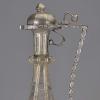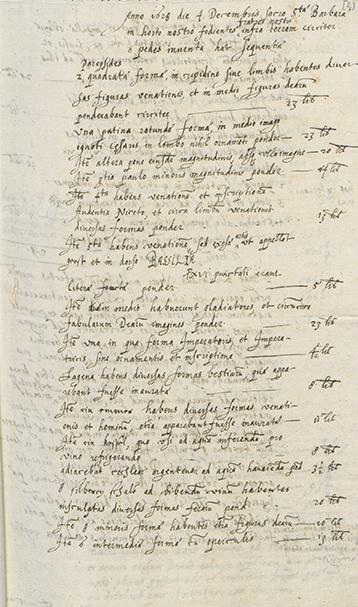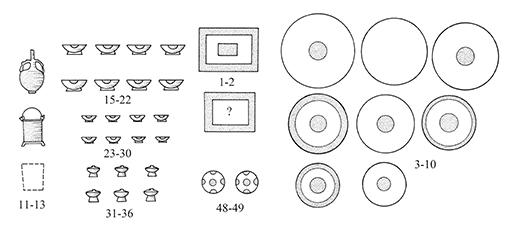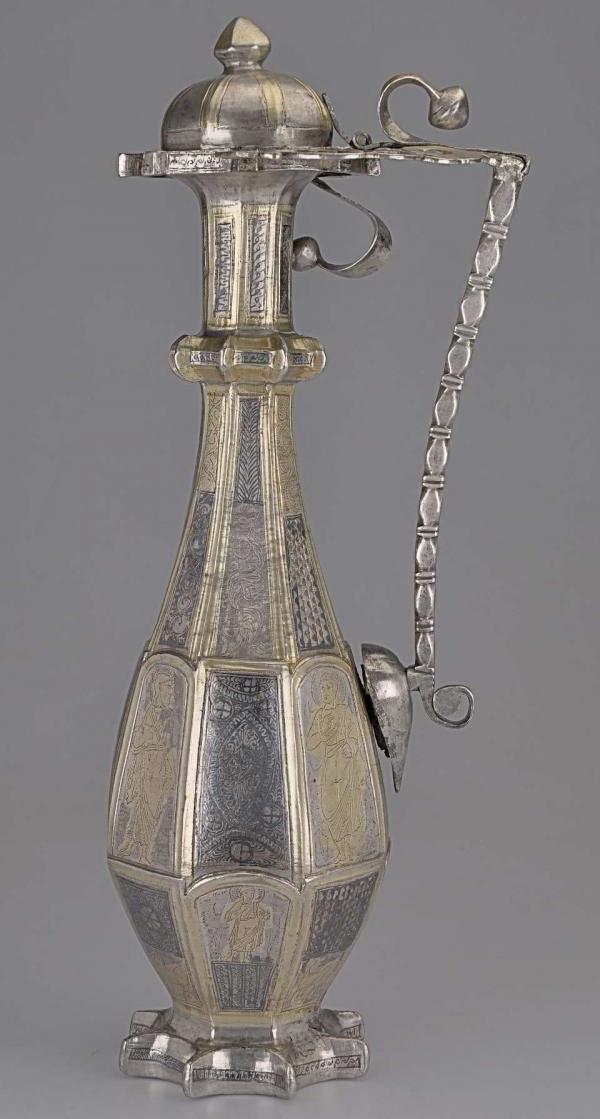The Trier treasure Hoard
The city of Trier in Germany was – under the name of Augusta Treverorum – the most significant imperial seat in the western provinces of the late Roman Empire. It was there where the treasure hoard was discovered. Considering its total weight, it is still regarded as the largest among the known treasure finds containing silver banquet sets, and can be dated to the 4th-5th centuries.
In 1628, during digging for the construction of a Jesuit monastery for novices, a stone chest with a stone lid was found. It concealed a hoard of late Roman silver vessels. At that time old treasures which turned up on the territory of the city were legally due to the archbishop and the prince-elector of Trier. Therefore, with the exception of two plates, the silver vessels were confiscated in exchange for 4093 imperial talers, and they were hacked and melted down. However, the Jesuits made an inventory of the discovered silver objects before the appropriation. Relying on the laconic descriptions of the luckily existing list, the composition of the treasure find, as well as the shape, size and decoration of the individual objects, can be more or less reconstructed. The inventory mentions 49 silver objects with a total weight of exceeding 114 kilograms. The large size of the platters recall the silver platters of the Seuso treasure, which implies that compiling and placing the objects of the two treasure finds underground could be close considering the time.



The find comprises vessels and utensils of various shapes used for consuming food and drinks, as well as for washing. Ten large serving vessels made up half of its total weight: eight circular platters and two rectangular trays (lanx). The weight of three of the platters exceeded 10 kilograms each. They included imperial and wedding presents, undecorated as well as richly ornamented pieces. The latter were decorated with figurative scenes in the medallion or on the rim, possibly on both. The descriptions of the inventory mention hunting scenes, male busts with wreaths, as well as male and female portraits turning to each other. Vessels used for serving drinks are represented by a richly decorated wine cooler (gillo) and a decorated and an undecorated bucket (situla). A strainer also belonged to the functionally connected set. The banquet set consisted of eight smaller and eight larger sauce bowls, which were placed on trays when serving food. It also included six plates with lids. The inventory allows us conclude that a perfume casket and perhaps a folding chair must have belonged to the wash and toilet set.
Two smaller plates were discovered together with the find. They were decorated with inscriptions of Christian contents and representations. Although these two dishes were not confiscated, they went missing over the centuries. Ewers are absent from the set. One of these was perhaps found in 1992 in a plot of land adjacent to the site where the hoard had been unearthed. The ewer with niello inlay and decorated with the figures of the Apostles is the same age as the vessels of the Trier treasure and it supplements them with regard to its function. Thus it can be presumed that the ewer is the fiftieth object of the treasure find known to us.
If an armed conflict precipitated the concealment of the treasure, it must have taken place in the first half of the 5th century when Augusta Treverorum was occupied and destroyed on several occasions. Yet the careful arrangement of the vessels may refer to the fact that the owners of the set stored their valuable vessels in the stone chest, which in the end remained concealed due to an unexpected event (death, attack).
Bibliography:
A. Kaufmann-Heinimann – M. Martin (ed.): Die Apostelkanne und das Tafelsilber im Hortfund von 1628. Trierer Silberschätze des 5. Jahrhunderts, Trier 2017




